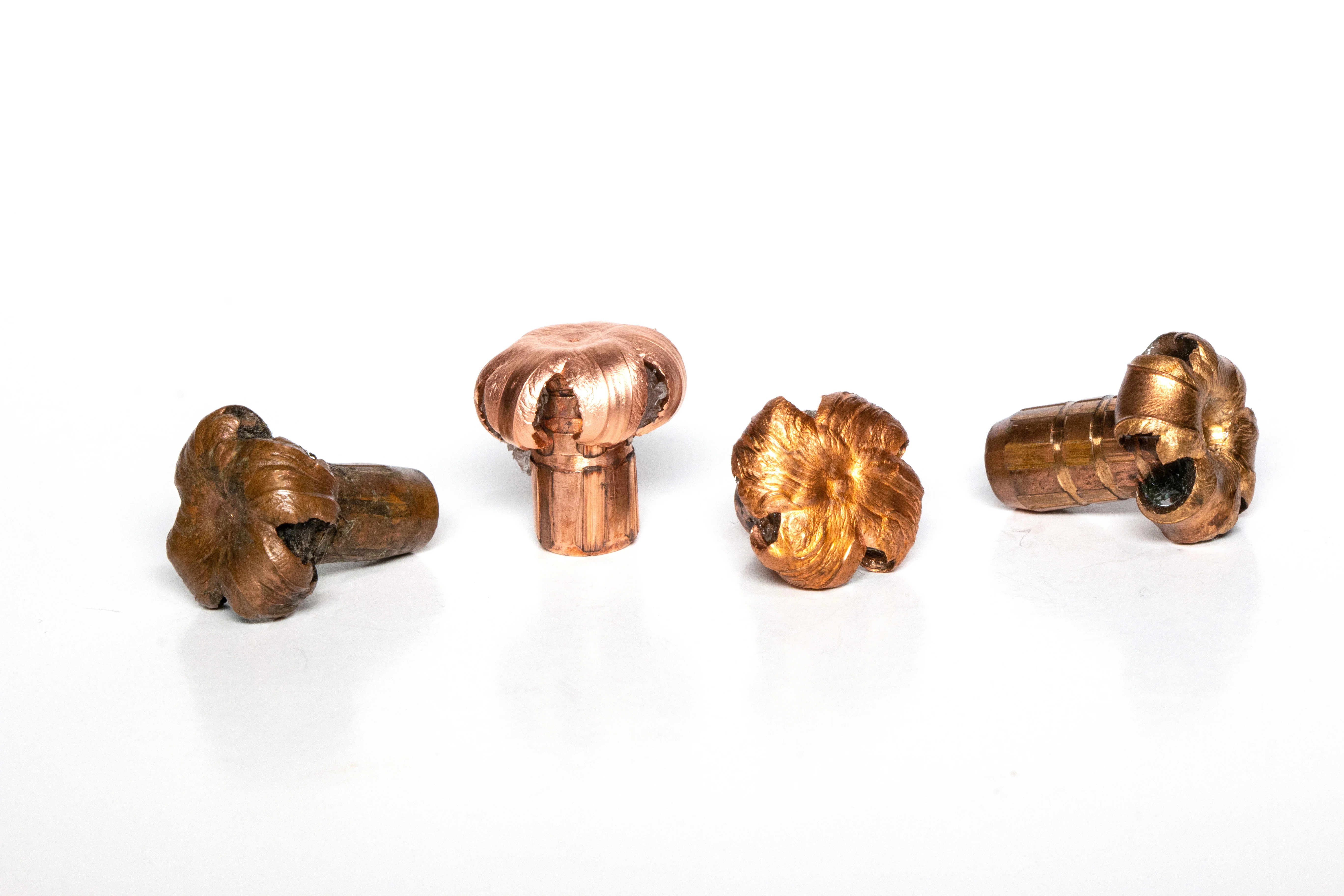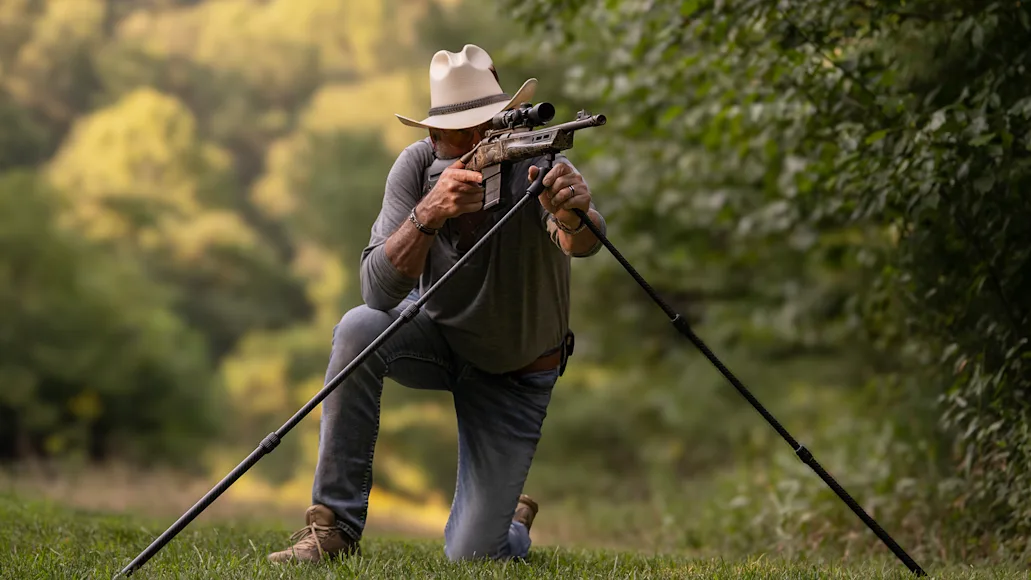One of the most important things a hunter can know is their maximum effective range. Maximum effective range is not how far you can shoot, or how far away your rifle-cartridge-and-bullet combination is lethal. It’s the farthest distance you can shoot and routinely place a bullet that will perform as intended within a big-game animal’s kill zone.
There are three primary factors that determine maximum effective range. The first is the intrinsic precision of your rifle and ammunition. The second is your shooting skill, which is generally the most important. And the third is the terminal performance capabilities of the bullet you’re using. Here’s how you can evaluate and combine all those factors to determine your maximum effective range.
Maximum Effective Range Factor #1: Rifle Precision

Don’t make the mistake of assuming your maximum effective range is determined by the inherent precision of your equipment. If your rifle and ammunition are capable of consistently delivering 1-inch groups from a bench rest at 100 yards, simple extrapolation tells us your gear is capable of an 8 inch group at 800 yards, which is about the average size of the kill zone on big-game animals. Let’s say you’re working with an 8-inch kill zone and your 308 Winchester is averaging 0.92 inch for five-shot groups at 100 yards. Just add two zeros to the 8-inch kill zone—and divide that number by 0.92 (800/0.92) and the result tells that you your rifle’s maximum effective precision range for an 8-inch kill zone is 869 yards.
It’s good to know the distance capabilities of your equipment, but you’re not going to have a bench rest or sandbags to work from when hunting. You need to know what your equipment and you are capable of when working together from the positions you’ll shoot from when hunting. To do that, you’ll need to do some shooting at a lot of different distances, or you’ll need to conduct a different kind of shooting exercise.
Related: The Best Way to Zero a Rifle for Long Range
Maximum Effective Range Factor #2: Shooting Skill

Field marksmanship is the single most important aspect in determining your maximum effective range. This is because when it comes to killing big-game animals, shot placement matters most. One way to determine your field marksmanship is to shoot five shots at 100 yards from a position you commonly use when hunting. Then you measure the group size. Just as when determining the precision capabilities of your rifle, you then add two zeros to the size of the kill zone and divide by group size. Do this for all the positions you’ll most likely shoot from while hunting and then build a chart and/or commit the data to memory.
I did this with a Remington Model 700 in 308 Winchester topped off with a Swarovski Z6i 1-6X24 riflescope before I went on a west Texas aoudad hunt. I shot multiple five-shot groups from the field positions I most commonly use, and the chart shows the results. This information told me what positions I need to shoot from based on the range to the target.

For example, my five-shot group average at 100 yards when shooting off hand was 5.48 inches and when shooting from the seated position with shooting sticks it was 1.77 inches. If I divide 800—for an eight inch kill zone—by 5.48 it tells me that based on my shooting skill, my maximum effective range when shooting from standing unsupported would be 146 yards. Using the same calculation, when shooting from seated with sticks, it would be 452 yards.

Just remember these figures do not take into account range estimation errors, trajectory compensation, wind drift, or the accelerated heart rate we experience when a trophy animal is in our sights. So, it makes sense to back off on them just a bit to account for real-world hunting variables. Even then, these estimates are based on shooting skill alone and you must also temper them by the terminal performance of the bullet you’re using.
Related: Biggest Shooting Mistakes, According to a Gunsite Instructor
Maximum Effective Range Factor #3: Bullet Performance

Notice in the chart above how the maximum effective ranges listed for four of the shooting positions are in red. We’ve already discussed how the capabilities of your equipment do not guarantee a maximum effective range, but your shooting skill does not always do it either. Hunters want bullets to upset/expand, and all big-game bullets have a minimum velocity at which expansion or deformation fails. If your bullet impacts slower than this velocity tissue damage is drastically limited. With a ballistics calculator we can determine bullet impact velocities at different distances, but how do we know how slow is too slow?
There’s no fixed rule, but there are guidelines. Conventional big-game bullets need to impact at about 1600 fps, bonded bullets at about 1800 fps, and mono-metal (solid copper or gilding metal) bullets work best when impacting faster than 2000 fps. Of course there are exceptions. Some slow-velocity cartridges use conventional bullets that upset at speeds slower than 1600 fps, and some long-range bonded, and mono-metal bullets will work when impacting below 1800 and 2000 fps. The best source for this information is the bullet manufacturer.
But back to my rifle, my chart, and the maximum effective ranges listed in red. With a muzzle velocity of 2750, the 168-grain Barnes Tipped Triple Shock bullet slows to less than 2000 fps at around 400 yards. That means any shot beyond 400 yards is past the bullet’s maximum effective terminal performance range. Even though my rifle and I should be capable of hitting an 8-inch kill zone at the distances listed in red for those positions, the bullet will not deliver optimum performance past 400 yards. Maximum effective range is not just about hitting; you also want your bullet to work when it gets there.
Related: How to Pick the Right Bullet for Deer Hunting
Know Your Maximum Effective Range for Each Rifle Setup

If you’re a one-rifle hunter, it should be easy to remember this information and a chart might not be necessary. However, if you have multiple rifles or even vary the loads you use, making a chart will help. Either way, you’ll need to work all this out for each equipment variation. It’s also a work in progress, so pencil-in the data. Just as equipment differences can change the results, as your shooting skill improves, your maximum effective range should increase as well.
The bottom line to the maximum effective range question is, it depends. It depends on a lot of things. For most hunters who will not be shooting past 300 yards, it’s mostly a question of shooting skill. But for those who want to stretch the distance, sometimes your shooting skill can outreach the capabilities of your bullet, or maybe even the precision capabilities of your rifle and ammunition combination. That said, all the information above will absolutely help you nail it down for your specific equipment and skills.


